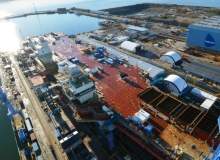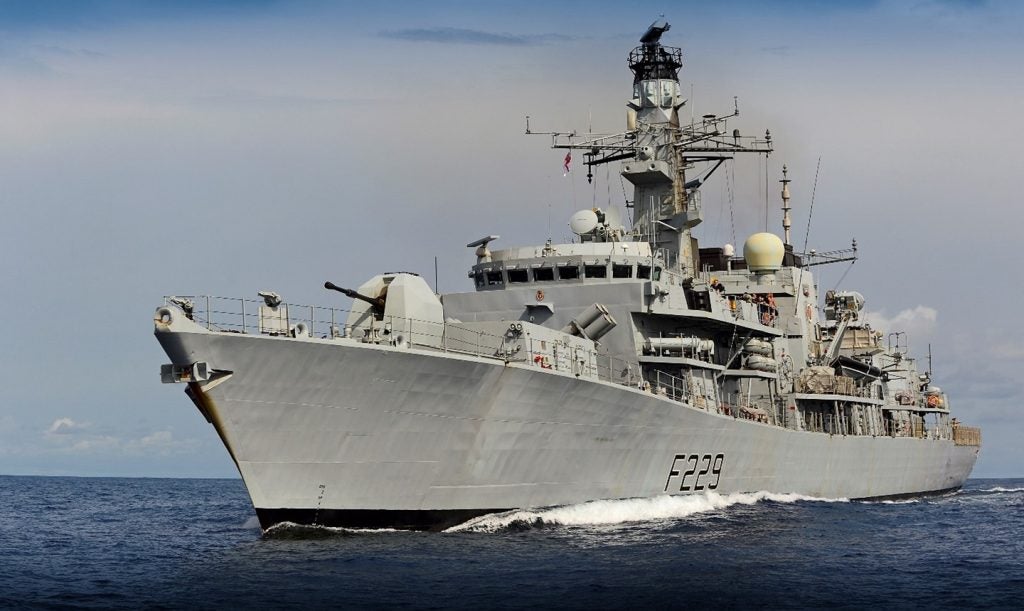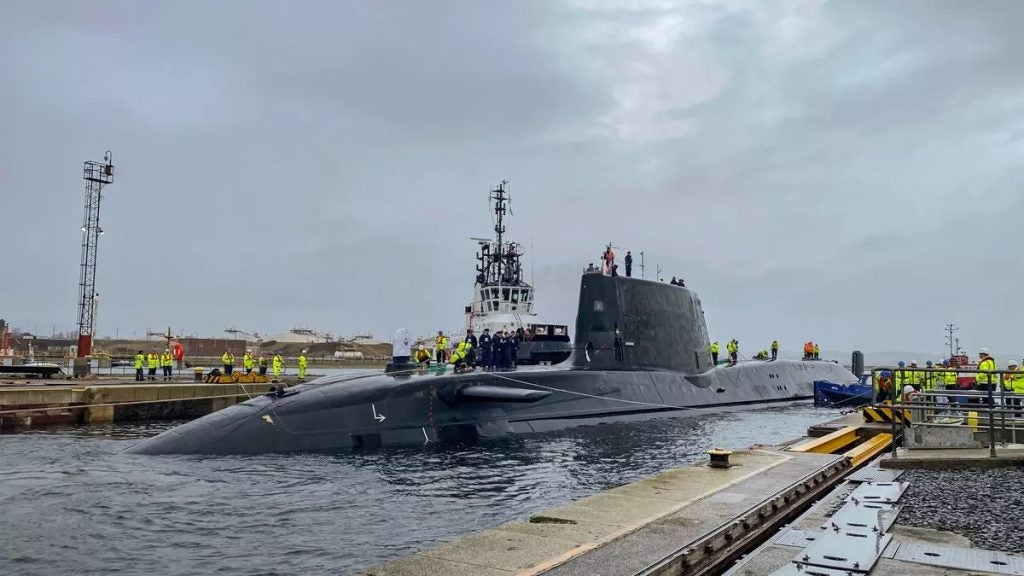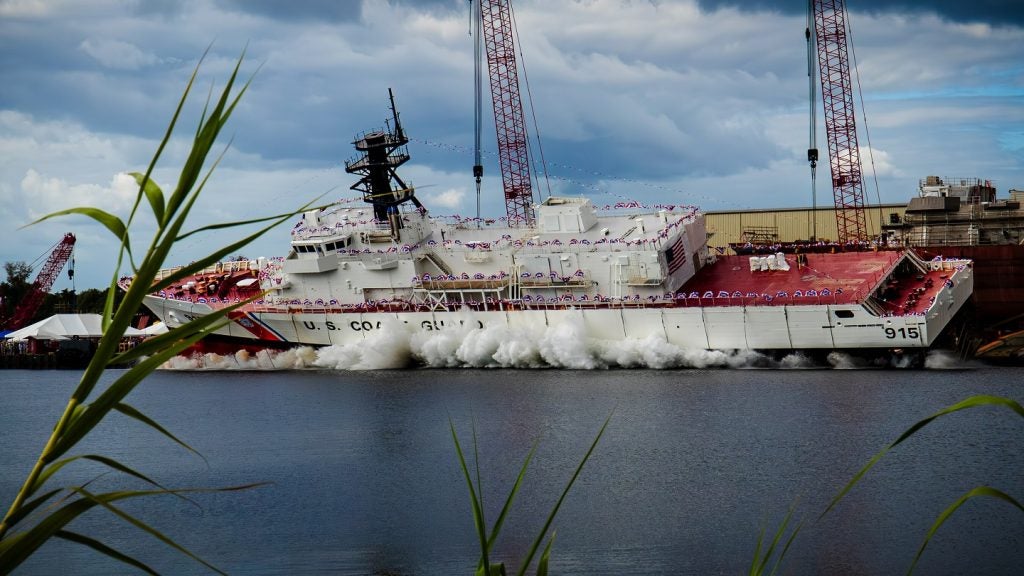

For over 150 years, workers at the Govan shipyard in Scotland have been building ships. The yard, located on the south bank of the Clyde river, was once part of a huge shipbuilding industry around Glasgow. At its peak during the Second World War, the industry employed 70,000 workers across 19 yards. But after years of economic decline, Govan and Scotstoun are the only two major shipyards that remain on the Clyde.
Now it seems the end might finally be in sight for Govan, marking the end of an era for Scottish shipbuilding. Under investment proposals put forward by BAE Systems this February, one option could see Govan close its doors for good and a new state-of-the-art manufacturing facility built at Scotstoun instead. Another option is to keep both Govan and Scotstoun open and improve existing facilities.
Those hoping for the latter option may be disappointed as BAE Systems has openly said they would prefer a single site for future shipbuilding.
"First we own the Scotstoun site, whereas the Govan estate is leased," Charlie Blakemore, BAE Systems Maritime-Naval Ships’ business and transformation director recently told IHS Janes. "We have our engineering activity already based at Scotstoun, and it is advantageous to have these close-coupled to production facilities. And there is more space for redevelopment at Scotstoun, providing us the flexibility to optimise the facility design."
See Also:
A new ‘frigate factory’ at Scotstoun yard
Govan is currently leased from port operator Clydeport, which bought the shipyard from Norwegian group Kvaerner in 1999. They leased it to BAE Systems on a 20 year contract which expires in 2019. Govan has played a vital role in the shipbuilding boom over the last decade, which has seen construction of several highly advanced warships including the Daring-class Type 45s and the new Queen Elizabeth-class carriers.
How well do you really know your competitors?
Access the most comprehensive Company Profiles on the market, powered by GlobalData. Save hours of research. Gain competitive edge.

Thank you!
Your download email will arrive shortly
Not ready to buy yet? Download a free sample
We are confident about the unique quality of our Company Profiles. However, we want you to make the most beneficial decision for your business, so we offer a free sample that you can download by submitting the below form
By GlobalDataThe £330m Merlin Life Sustainment Programme will convert 25 RAF AW101 Merlin helicopters for maritime use by the Royal Navy.
In 2014, all six Type 45 destroyers are complete and most of the aircraft carrier work is now centred at the Rosyth shipyard in Fife, where some Clyde workers have been transferred.
Blakemore indicated the single site option would allow complex warships to be built quicker and more efficiently than the two site option. New facilities at Scotstoun would turn the shipyard into a ‘frigate factory’ enabling two ships to be built concurrently under cover in a tandem dock. Outfitting could also be carried out at the same facility. In total, BAE Systems estimates build time would be cut by a third with a single site.
The Royal Navy’s newest warship, the Type 45, involved a complicated manufacturing process which saw Govan, Scotstoun, Portsmouth build several "blocks" which would then be assembled in Govan. The assembled Type 45 would then be sailed up the river to be outfitted with various systems and sensors at Scotstoun. BAE Systems wants to eliminate this inefficient process and ultimately improve productivity through a single site.
BAE Systems could invest £200m to transform Scotstoun into a 21st century shipbuilding site. This would include a new 330m covered modern dock hall, a steelwork preparation facility, a steelwork fabrication facility and a paint cell. The company would also improve employee offices and recreational areas like the canteen and gym. These plans have been influenced by a three-year long study comparing BAE Systems’ processes with 34 other shipyards worldwide.
Construction of the new Scotstoun facility would begin in January 2015 and finish in 2017.
Planning for a future without Govan
A single site option and the inevitable closure of Govan is not popular with workers on the Clyde. GMB, the biggest union at BAE Systems’ Clyde shipyards, says it would like to see both Govan and Scotstoun remain in their present form.
"Over the last 15 years, the two shipyards have shown they can produce the quality products required by the UK government," says Jim Moohan, Chairman of Shipbuilding and Engineering Unions in Scotland and Senior Organiser at GMB Scotland. "They have sent a clear signal to other countries that the Clyde is the best place to build ships of a sophisticated nature."
For Moohan, Govan’s long heritage of building merchant ships is just one reason why the shipyard should be kept open. Unlike Scotstoun, which has a history of building ships for only the military, Govan would give BAE Systems the option to "broaden its horizons" and break into the commercial shipping market. While keeping Govan open is favoured, union officials like Moohan are preparing themselves for possible closure.
"In the event [Govan] does close then I do believe the skill mix could still be retained on the other side of the Clyde at Scotstoun. I would hope that if they did come to a decision and it was only one yard, we could mitigate any redundancies," Moohan adds.
A two site option would see shipbuilding continue at the Govan site for the foreseeable future. Construction of the future Type 26 Global Combat Ship would be split between Govan and Scotstoun. Existing fabrication and main ship build halls at Govan would be extended and a new paint cell and outfit hall constructed. The current berth would also be levelled to create a new transfer quay and at Scotstoun, work would include upgrades to the dry docks and strengthening of the deep water berth to support mobile cranes.
To upgrade both sites would require an estimated £100m in investment from BAE Systems. If the option was selected, construction would begin at Govan in February 2015 and finish in 2017, while upgrade work at Scotstoun would begin in 2017 and finish a year later. A two site option would be cheaper for BAE Systems in the short term but the long term cost savings associated with a single site would not be realised.
Whichever option is chosen, the reality is that both facilities are in need of upgrades. The British government is expected to make its final decision on the Type 26 Global Combat Ship next year and, once approved, the first piece of steel will be cut soon after. A total of 13 Type 26 frigates are destined to replace the Royal Navy’s current Type 23 frigate fleet which is being withdrawn early in the next decade.
BAE Systems wants to manufacture the Type 26 as efficiently as possible, which could lower costs and open the door to potential exports.
Naval-technology.com profiles some of the world’s worst submarine accidents in history.
With the last Type 45 leaving the Clyde last year and no decision yet on the Type 26, the Clyde shipyards faced the prospect of not building any ships for at least a year. In November 2013, the UK MOD decided to fill the manufacturing gap and retain key skills by ordering three offshore patrol vessels (OPV) from BAE Systems. Work on the OPVs will begin this year and utilise both Govan and Scotstoun shipyards.
If BAE Systems’ proposals for a single site get the go-ahead, the OPVs could be the last ships ever built at the Govan shipyard.
Bolstering Scottish shipbuilding before the referendum
Proposals to upgrade the Clyde shipyards come just a few months after BAE Systems announced it was consolidating its shipbuilding business in Scotland and ending shipbuilding in England altogether. The firm also announced it would cut 1,775 jobs across the UK with around 800 jobs being lost in Govan, Scotstoun and Rosyth. BAE Systems cited a "significant" drop in demand as the reason for the job losses and restructuring.
The historic decision to end shipbuilding at Portsmouth, where ships have been built since the 15th century, means the Clyde shipyards are now the only UK facilities which can build complex surface ships. BAE Systems’ site at Portsmouth will not close completely; it will remain the company’s main facility for ship maintenance and repairs.
Many have interpreted the decision to keep shipyards open on the Clyde and end manufacturing in Portsmouth as a way to bolster the pro-union campaign in this year’s Scottish independence referendum. Closing shipyards in Scotland, which employ around 3,000 people, in favour of English shipyards, could have effectively sunk the pro-union campaign.
Any suggestion that Clyde was given preference because of the referendum has been denied by both UK government and BAE Systems officials.
The decision to place all UK shipbuilding infrastructure north of the border is a huge gamble, especially if Scotland votes to break away from England in September. If that happened, the Royal Navy would have to rely on a foreign country in order to deliver its new fleet of Type 26 frigates. In the political fallout that would inevitably follow a ‘yes’ vote, it is unlikely an English government would simply give away its ability to build warships.
Many observers predict the decision to end manufacturing in Portsmouth would be overturned and BAE Systems’ plans to invest in the Clyde cancelled. But nothing is certain.
"It is riddled with politics so it is hard to make a prediction," says Nick Gross, a corporate lawyer and Chairman of Portsmouth-based Coffin Mew. "Logically, I think [moving to Portsmouth] is right. Why should an English government want to commit to Scotland in circumstances where they are independent and where Portsmouth still has a thriving shipyard?"
It is telling that a decision on whether to invest in Govan or Scotstoun under proposals set out in February is not expected until later on in the year. Only then will we truly get an idea of what the future of British shipbuilding will look like.
Follow Grant Turnbull on Google+


.gif)





